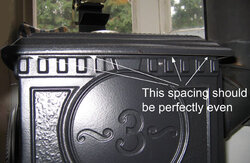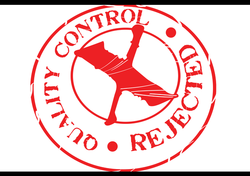I have been burning Liberty Bricks in my stove exclusively this winter and the stove was brand new in the box when i bought it this past summer. At the beginning of the season, I started with a fresh pallet of bricks stored inside of my house. I would only burn 7 at most on a cold start as they packed a huge punch. Everything was going well, but now half way through my second pallet of bricks which is stored outside in the garage, the burn is completely different. I am not doing anything different in terms of loading, or air control, but even with upwards of 8 or 9 bricks, i have to leave the air control wide open to reach cruising temperatures that heat the space. If i damp as i used to, gradually working my way down to a low air setting, I will never break 400F and i have no idea why. This is also translating to shorter burn times with the same amount of fuel since I have to leave the air open longer to get up to temp.
Could there be any difference in this batch of bricks? They're stored out in the cold, but they're inside the garage so they haven't gotten wet. I bring in 2 or 3 packs at a time and they all behave the same so i doubt it has anything to do with the temperature of the block. this is absolutely puzzling to me as most problems i see on here are of runaway fires that get too hot.
if it matters, I have noticed that the secondaries on the right (your right when looking at it) dont seem to fire but middle and left look fine. the fire just all in all seems lazy unless the air control is open 3/4 to full. I don't have the recirculating fan, dryer, range hood or anything else running and the stove didnt behave like this in December. Is there ANYTHING at all you pro's out there might think i could check to put some pep back in it's step? I dont want to burn way more bricks than i have to just to keep the stove between 450-500F. At that level of inefficiency, i might as well turn the heat pump back on.
Could there be any difference in this batch of bricks? They're stored out in the cold, but they're inside the garage so they haven't gotten wet. I bring in 2 or 3 packs at a time and they all behave the same so i doubt it has anything to do with the temperature of the block. this is absolutely puzzling to me as most problems i see on here are of runaway fires that get too hot.
if it matters, I have noticed that the secondaries on the right (your right when looking at it) dont seem to fire but middle and left look fine. the fire just all in all seems lazy unless the air control is open 3/4 to full. I don't have the recirculating fan, dryer, range hood or anything else running and the stove didnt behave like this in December. Is there ANYTHING at all you pro's out there might think i could check to put some pep back in it's step? I dont want to burn way more bricks than i have to just to keep the stove between 450-500F. At that level of inefficiency, i might as well turn the heat pump back on.



